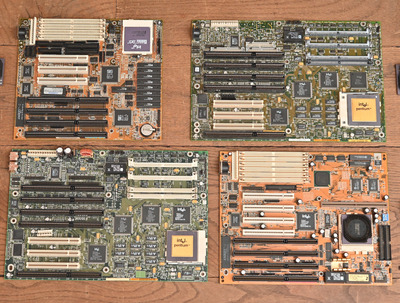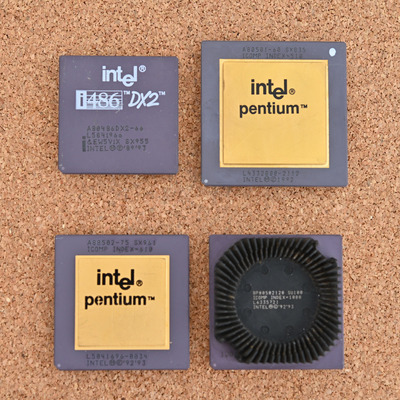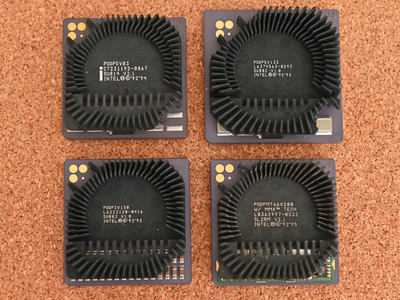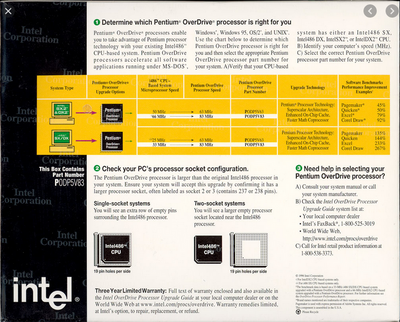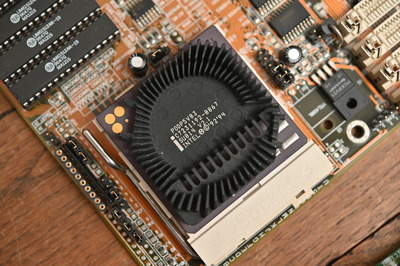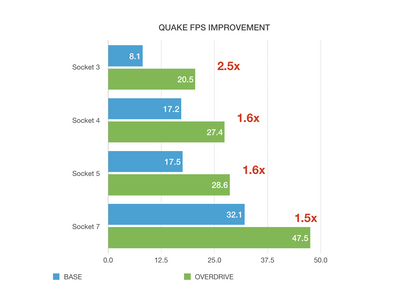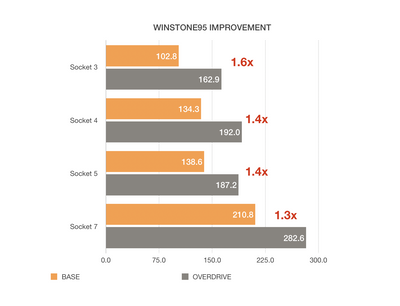First post, by mpe
Some of us are having more free time at home lately. 😀 Let's burn some on crazy retro projects!
I built 4 retro systems:
- Socket 3 - 486DX2-66 P24D on MSI4144 board with SiS496 chipset
- Socket 4 - Pentium-60 P5 on Intel Batman's Revenge board, 430LX chipset
- Socket 5 - Pentium-75 P54C on Intel Plato board, 430NX chipset
- Socket 7 - Pentium-120 P54CQS on Gigabyte GA-586HX board with 430HX chipset
They share the same graphics card (Diamond S3 Trio64V+ PCI) and RAM - (16 MB FPM/EDO where supported)
Then I have 4 Pentium overdrive CPUs for those sockets:
- PODP5V83 (Pentium Overdrive 83 MHz) for Socket 3
- PODP5V133 (Pentium Overdrive 133 MHz) for Socket 4
- PODP3v150 (Pentium Overdrive 150 MHz) for Socket 5
- PODMT66x200 (Pentium Overdrive 200 MHz with MMX) for Socket 7
I would like to find out which overdrive delivers the best relative improvement over the original base system. To keep things simple, let's assume I am interested in Quake framerate in DOS and Winstone 95 score in Windows 3.1. Both equally weighted.
I am benchmarking as I type this. I was wondering if anyone has any educated guess as to which overdrive will prove to be most useful upgrade and what the order of these in relative performance is going to be 😉
